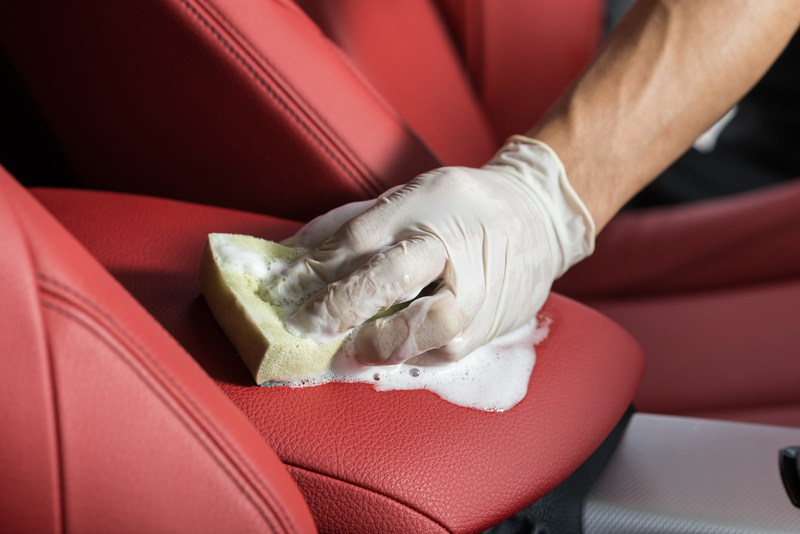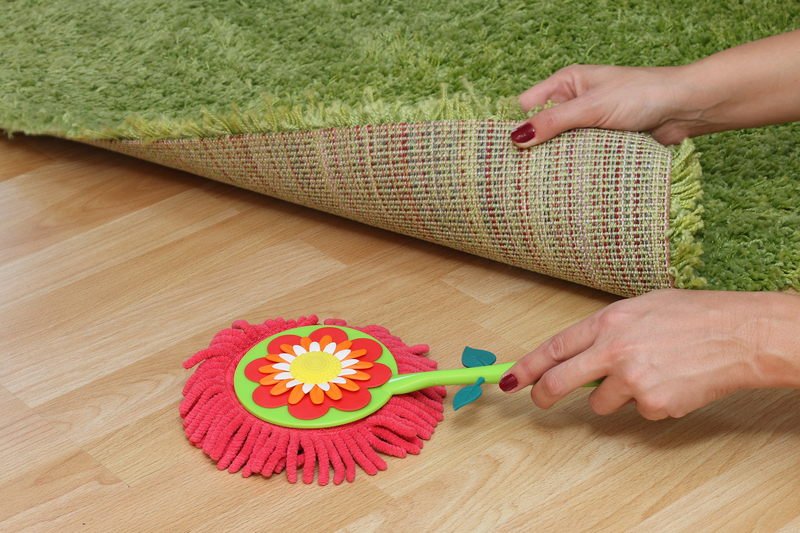Cleaning Curtains Effectively: A Homeowner's Guide
Posted on 07/06/2025
Cleaning Curtains Effectively: A Homeowner's Guide
Beautiful curtains add style, sophistication, and functionality to any home. However, over time, they can collect dust, allergens, odors, and stains. To keep your window treatments looking new and extend their life, it's vital to clean them regularly. This comprehensive guide explores effective curtain cleaning methods, expert tips, and how to maintain your curtains for lasting freshness.
Why Cleaning Curtains Is Essential for Every Homeowner
Clean curtains aren't just about aesthetics; they play a substantial role in home hygiene. Curtains accumulate:
- Dust and allergens: These contribute to allergies and respiratory issues.
- Pet hair and dander: Increasing the need for thorough cleaning in homes with animals.
- Odors: From cooking, smoke, and environmental factors, can linger in fabric.
- Stubborn stains or mold spores: Especially in humid rooms like kitchens and bathrooms.
Neglecting curtain maintenance can negatively impact your indoor air quality and the overall appearance of your living spaces. Regular and effective curtain cleaning is an essential part of any homeowner's cleaning routine.

Understanding Curtain Fabrics Before Cleaning
Curtains are made from a variety of fabrics, each with its own cleaning requirements. Knowing your curtain material is the first step towards choosing the safest and most effective cleaning method.
Common Curtain Fabrics and Their Characteristics
- Cotton: Durable, often machine or hand washable, susceptible to shrinking.
- Linen: Natural, elegant, can be machine washed on gentle but may wrinkle easily.
- Velvet: Luxurious and heavy, usually requires professional or spot cleaning.
- Silk: Delicate and should be dry cleaned to avoid damage.
- Polyester: Common and easy to care for, often machine washable.
- Blends: Read manufacturer labels as care instructions may vary.
Tip: Always check the care label attached to your curtains before starting any cleaning process. When in doubt, test cleaning solutions on a hidden section of the fabric.
How to Prepare Curtains for Cleaning
Proper preparation ensures an effective and safe clean for your beloved window dressings.
- Remove hooks, rings, and hardware: Detach all accessories from the curtain rod to prevent snags and surface damage.
- Shake out loose dust: Take curtains down and gently shake off dust and debris outside before cleaning.
- Vacuum while hanging: Use a handheld or upholstery vacuum with a soft brush attachment to remove surface dust and pet hair. Vacuuming once a month can dramatically reduce buildup and allergens.
- Spot test cleaning agents: Before full-scale cleaning, test your cleaning method on a small, inconspicuous area to check for colorfastness or fabric damage.
Different Methods to Clean Curtains at Home
There are several curtain cleaning solutions homeowners can use. The method you choose depends on your curtain's material, condition, and manufacturer's instructions.
1. Machine Washing Curtains
- Best for: Cotton, polyester, and some linen blends.
- Instructions:
- Read labels: Only machine wash if recommended by the manufacturer.
- Gentle cycle: Use a delicate or hand-wash cycle with cold or lukewarm water.
- Mild detergent: Use a gentle, bleach-free detergent to preserve colors and fibers.
- Small loads: Wash one or two panels at a time to avoid wrinkling and ensure a thorough clean.
- Drying: Air dry by hanging or use a tumble dryer on low heat if the label permits. Remove immediately to prevent wrinkling.
Pro Tip: Place sheer or delicate curtains inside a mesh laundry bag or pillowcase to avoid tangling and protect the fabric.
2. Hand Washing Curtains
- Best for: Sheer, lace, and delicate fabrics.
- Instructions:
- Fill a clean bathtub or large basin with lukewarm water.
- Add a small amount of mild liquid detergent and mix gently.
- Immerse the curtains completely and lightly agitate them with your hands.
- Rinse thoroughly in cool, clean water until all suds disappear.
- Squeeze out water gently--never wring or twist delicate fabric.
- Hang curtains immediately to dry, spreading them out to prevent creases.
3. Steam Cleaning Curtains
- Best for: Heavy drapes, velvet, non-washable, and lined curtains.
- Instructions:
- Use a handheld garment steamer or upholstery steamer.
- Hang curtains and slowly run the steamer from top to bottom, paying close attention to dirty spots.
- Ensure sufficient distance to prevent water marks or fabric damage.
- Allow curtains to dry with good air circulation.
Steam cleaning is an excellent way to freshen curtains between full washes and kill dust mites and bacteria. It's a preferred choice for fabrics that can't be easily removed or washed.
4. Dry Cleaning Curtains
- Best for: Silk, lined, and certain specialty fabrics.
- Instructions: Take curtains to a trusted professional cleaner familiar with drapery fabrics.
Never ignore a "Dry Clean Only" label. Inappropriate washing can ruin expensive, delicate, or lined curtains.
5. Spot Cleaning Curtain Stains
- For: Small stains, spills, pet accidents, or marks.
- Instructions:
- Blot the stain with a clean, damp cloth--never rub, as this can push the stain deeper.
- Use a mild fabric cleaner or diluted vinegar solution for tougher marks.
- Test any solution on a hidden spot first.
- Let air dry completely before rehanging.
Pro Tip: For oily stains, sprinkle baking soda to absorb grease before spot treatment.
How Often Should Homeowners Clean Their Curtains?
Curtain cleaning frequency depends on a variety of factors, such as household allergies, location, pets, and smoking habits. Here's a general schedule to keep your curtains fresh:
- Weekly: Vacuum or shake out dust.
- Every 3-6 months: Full wash or dry clean.
- Monthly: Spot clean visible stains and rehang.
- Immediately: After spills or accidents.
Locations with high traffic, smokers, or allergy sufferers may require more frequent cleaning for optimal health and freshness.
Special Considerations for Cleaning Various Curtain Types
Cleaning Blackout Curtains
- Tip: Blackout curtains have a special coating that can degrade with washing. Prefer vacuuming, spot cleaning, or gentle hand washing only. Avoid bleaching agents and excessive wringing.
Cleaning Sheer and Lace Curtains
- Tip: Wash these delicate fabrics in a mesh bag on a gentle cycle, or hand wash them. Avoid high heat drying.
Cleaning Heavily Lined or Interlined Curtains
- These may be too heavy or complex for home washing. Vacuum, steam clean, or seek professional curtain cleaning services.
Drying and Rehanging Curtains After Cleaning
Proper drying preserves the curtain's shape, prevents mildew, and minimizes creasing.
- Air drying: Hang curtains outside on a line or on the rod indoors immediately after washing. Position out of direct sunlight for delicate colors.
- Machine drying: If safe, use a low-heat setting and remove curtains while still slightly damp to reduce wrinkles.
- Steam or press: On low setting, iron or steam clean to smooth out creases. Always iron on the reverse side for delicate or printed fabrics.
Tips for Maintaining Fresh and Clean Curtains
- Regular vacuuming: Keeps dust mites and allergens at bay.
- Open windows: Allow fresh air to circulate and prevent damp odors.
- Store properly: If rotating or storing curtains, keep them in a cool, dry place, folded with acid-free tissue to prevent mildew.
- Address stains quickly: The sooner you treat a stain, the easier it is to remove.
- Use curtain liners: Liners shield your curtains from dirt and sun fading, extending their lifespan.
Natural and Eco-Friendly Curtain Cleaning Options
For those seeking greener cleaning solutions, consider these alternatives:
- Baking soda: For odor and spot removal.
- White vinegar: Effective on mildew and grease stains, especially for kitchen curtains.
- Castile soap: Gentle, biodegradable soap suitable for hand-washing delicate drapes.
- Sunshine: Natural sunlight is an excellent deodorizer--just remember to avoid prolonged exposure to prevent color fading.
Always spot test natural solutions on a small area before applying them to the entire curtain.
When to Call a Professional for Curtain Cleaning
Sometimes, effective curtain cleaning requires professional expertise. Seek out a drapery cleaning service if:
- You have large, heavy, or awkward-to-remove curtains.
- Your curtains are made of or lined with specialty fabrics like silk or velvet.
- Mold or mildew is severe and visible throughout the curtain panel.
- You don't have suitable space or tools for steam cleaning at home.
A professional cleaning service ensures that your investments are handled with care and keeps your window treatments looking their best for years to come.

Frequently Asked Questions (FAQs) About Curtain Cleaning
- Can I use a washing machine for all types of curtains?
No. Only machine wash curtains if the care label allows. Delicate and specialty fabrics require hand or professional cleaning. - How do I clean curtains that can't be washed or dry cleaned?
Use a vacuum and a garment steamer for maintenance. Spot treat stains with fabric-safe cleaners as needed. - How can I prevent my curtains from fading?
Use sheer liners, avoid direct sunlight as much as possible, and wash in cold water. - Can I iron curtains after washing?
Yes, but check the care label first. Use a low-temperature setting and iron while the curtain is damp for best results.
Conclusion: Enjoy Fresh, Beautiful Curtains Year-Round
Maintaining clean curtains doesn't have to be difficult or time-consuming. With the right techniques, regular care, and prompt stain removal, your window treatments will keep your rooms fresh, stylish, and healthy. This comprehensive homeowner's guide to effective curtain cleaning empowers you to tackle dirt, dust, and stains confidently--saving you money and extending the life of your drapery investment.
Ready to breathe new life into your windows? Start your curtain cleaning routine today and experience the difference fresh, clean curtains make in your home!




 Dry Carpet Cleaning
Dry Carpet Cleaning
 Mattress Cleaning
Mattress Cleaning
 Leather Sofa Cleaning
Leather Sofa Cleaning